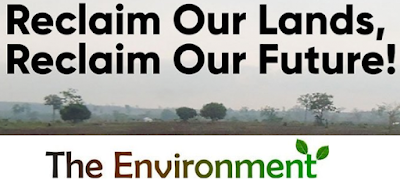America's Great Plains are being torn up with frightening implications for biodiversity and carbon storage. Everyone knows about the destruction of the Amazon rainforest, but grasslands are off their radar
Grasslands used to cover a large swath of North America before European settlement. When Europeans arrived, they quickly plowed up about half of the grasslands on the continent and converted them to agricultural use, growing corn, soybeans and wheat. And today, new research shows the rate that the ecosystem is being lost has been increasing.
Patrick Lendrum, a scientist with the World Wildlife Fund’s northern Great Plains program, led a research team that released a report in September showing that from 2018 to 2019 an estimated 2.6m acres of grassland were plowed up, primarily to make way for row crop agriculture – an area larger than Yellowstone national park. Lendrum says. “That’s an alarming trend.” It’s also a huge blow for efforts to fight the climate crisis and represents a little reported unfolding environmental disaster in the US.
Farmers and ranchers make decisions based on global commodity prices. There’s an increased demand for crops for human food, livestock feed and fuel. Biofuels like ethanol boomed in 2009 or 2010 and that increased demand.
“Grasslands are mostly used for grazing of livestock and when that balance gets out of line, and crop agriculture becomes more profitable, that’s when we see the resurgence of the tillup,” says Tyler Lark, a researcher at the University of Wisconsin who has studied grasslands for the past decade. Lark is also studying the ways that croplands are being turned into housing – so the total amount of cropland isn’t expanding that much, but it’s being developed for residential use, and crops are being pushed to the periphery. “It’s almost a cascading effect, as we look at future urban expansion,” he says.
There are enormous implications for climate change when people dig up grasses that have been intact for hundreds of years, because grasslands store tons of carbon in their soils. Native prairie grasses have deep roots that stabilize the soil and prevent erosion. When people plow it up, it releases carbon into the atmosphere. It also exposes the soil to the air, which increases erosion and can also lead to nitrate leaching. People often think of forests as natural ecosystems that store huge amounts of carbon, Lark says. But grasslands store immense amounts as well, out of sight, under the ground. “When we plow those up, a lot does become lost. If we can reduce the conversion, that will go a long way in lowering emissions.”
Once grasslands have been destroyed for agriculture, Lendrum says, it can take decades or even centuries to restore them. The WWF is working with landowners to convert croplands back into grasslands, but the process is slow and expensive. “Once that piece of grass is initially tilled, it’s very difficult to restore those ecosystem benefits,” says Lendrum. “Carbon in particular, it’s a slow process.”
Lark says the future is really about using the croplands we have already in the most efficient manner, and improving yields. “There is lots of room to expand production without expanding cropland area – it’s just easier to expand area than work on innovation.”
Just as increased attention to rainforests and savannah led to protecting them globally from deforestation, the same level of awareness could be applied to grasslands. Lark says he could see campaigns around native ecosystems, conversion-free supply chains, and products that aren’t contributing to the loss of grasslands.
Ben Turner, a natural resource management scientist at Texas A&M University in Kingsville, Texas, says “We’re not going to reclaim even a small percentage of all the grasslands we’ve lost,” he says. But farmers can make cropland as functional as grasslands used to be, by diversifying crop systems, integrating livestock with crops, and finding ways to value ecosystem services like pollinators and migratory birds.
America’s native grasslands are disappearing | Endangered habitats | The Guardian


No comments:
Post a Comment